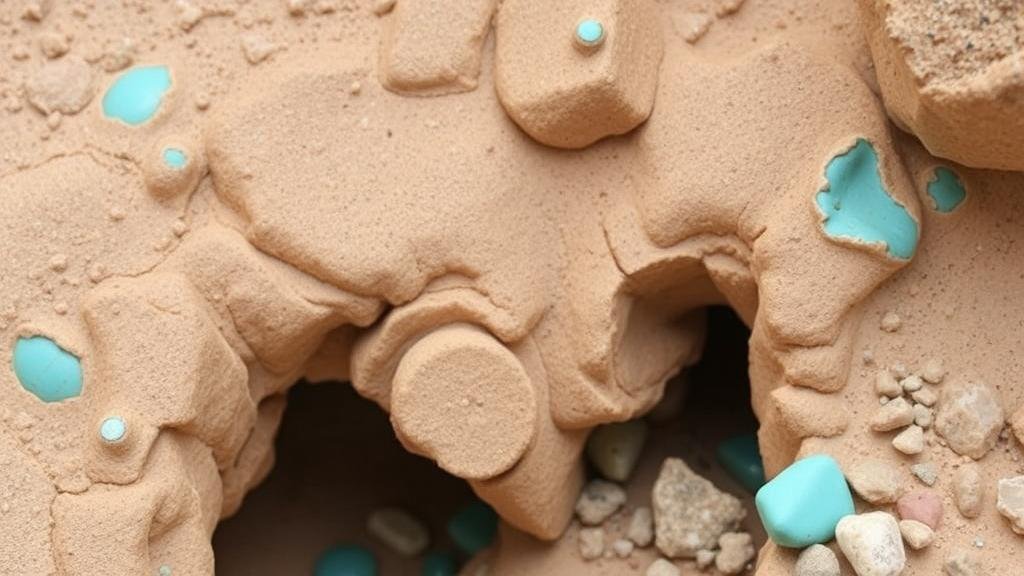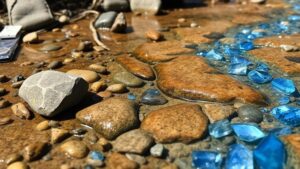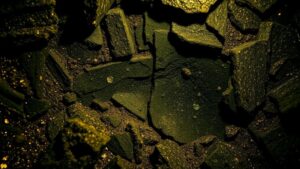Investigating the historical significance of turquoise mines used by the Ancestral Puebloans in the American Southwest.
Investigating the Historical Significance of Turquoise Mines Used by the Ancestral Puebloans in the American Southwest
The Ancestral Puebloans, a Native American culture flourishing from approximately 100 AD to 1300 AD, are renowned for their impressive architecture, sophisticated agricultural methods, and rich spiritual life. An essential component of their cultural heritage was their utilization of turquoise, a vibrant blue-green mineral that held significant value both aesthetically and commercially. Understanding the history and significance of turquoise mines in the American Southwest offers fascinating insights for rockhounds and mineral collectors alike.
The Importance of Turquoise in Ancestral Puebloan Culture
For the Ancestral Puebloans, turquoise was more than just a decorative stone; it was a symbol of wealth, protection, and status. This mineral was often crafted into intricate jewelry and ceremonial items, signifying the wearers social standing and spiritual beliefs. Archaeological finds from sites like Chaco Canyon and Mesa Verde reveal a rich tradition of turquoise craftsmanship that contributed to community identity.
- Turquoise was often used in trade with neighboring tribes, making it an economic asset.
- Spiritual practices included the use of turquoise in rituals and ceremonies, believed to promote health and prosperity.
Turquoise Mining Practices
The turquoise mines utilized by the Ancestral Puebloans were primarily concentrated in the Southwest region, particularly within present-day Arizona and New Mexico. Mining techniques were primitive yet effective; the Puebloans employed simple tools made from rock and wood, extracting turquoise from the earth. often mined in shallow deposits, making it accessible without extensive excavation efforts.
- The primary mines included the Turquoise Mountain Mine and the Kingman Mine.
- Evidence suggests that turquoise mining may have been seasonal, allowing communities to balance mining with agricultural practices.
Scientific Aspects of Turquoise
From a geological standpoint, turquoise is a hydrous phosphate of copper and aluminum, with the chemical formula CuAl6(PO4)4(OH)8*4H2O. Found typically in arid regions, turquoise forms in oxidized zones of copper deposits where water interacts with minerals. Its vibrant color is primarily due to the presence of copper, which provides a spectrum of blue and green shades.
Turquoise often has varying degrees of hardness, typically ranging from 5 to 6 on the Mohs scale. It can exhibit a matrix of other minerals, known as matrix, which can enhance its visual appeal and value. The value of turquoise is often determined by its color, matrix, and overall quality, making it a sought-after stone for collectors.
Real-World Applications and Collecting Tips
Today, turquoise remains a popular gemstone among collectors and is frequently used in jewelry making. For rockhounds interested in collecting turquoise or learning about its historical significance, there are several aspects to consider:
- Research local laws regarding the collection of minerals in protected areas, such as national parks or monuments.
- Join local rock and mineral clubs to connect with other enthusiasts and gain access to workshops and field trips.
- Study identifying features of authentic turquoise versus treated or imitated stones, as these can significantly impact value.
Conclusion: Understanding the Legacy of Turquoise
The turquoise mines of the Ancestral Puebloans are a crucial component of understanding their complex social structure, economic trade, and spiritual values. For modern rockhounds and collectors, not only does seeking out turquoise provide an opportunity to hold a piece of history, but it also allows for greater appreciation of the cultural narratives tied to this beautiful mineral. By exploring historical and geological contexts, collectors can foster a deeper respect for the legacy of the Ancestral Puebloans and their enduring connection to turquoise.



